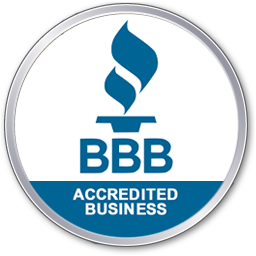Is lead testing mandatory for homeowners? Although not legally mandatory in every jurisdiction, lead testing is a good idea. Given the potential health hazards of lead, having your home inspected and tested for lead can provide you with peace of mind and promote a healthy environment.
Lead testing is the most important step in identifying and addressing potential health hazards lurking in your home’s painted surfaces and pipes.
Keep reading to discover the importance of prioritizing lead testing for homeowners, the health risks associated with lead exposure, the various methods for testing lead levels, and how to prevent and remediate lead exposure in your home today.
Health Risks Associated with Lead Exposure
Lead exposure doesn’t discriminate. It poses a significant health risk for everyone, especially the elderly, young children, and pregnant women. In fact, many cases of lead exposure, especially in young children, were due to lead-based paint used in homes built before 1978. This is because lead-based paint deteriorates over time, causing it to chip and produce toxic dust particles.
When these dust particles are ingested or inhaled, the toxic lead can enter the bloodstream and cause a wide range of health issues.
Health Risks for Children
Some of the populations most at risk due to lead exposure are young children. This is due to their developing nervous systems and growing bodies. Lead exposure in children can potentially lead to the following:
- Developmental delays
- Behavioral problems: Some behavioral problems in children exposed to lead include impulsivity, hyperactivity, and increased aggression
- Neurological damage: High levels of lead exposure can lead to seizures, irreversible brain damage, and death
- Learning disabilities
Health Risks for Pregnant Women
Like young children, pregnant women face increased risks to their own health and the health of their unborn child.
Some health risks include the following:
- Miscarriage and stillbirth
- Low birth weight
- Developmental problems
- Premature birth
Health Risks for the Elderly and Adults
While most healthy adults are less at risk of the harmful effects of lead poisoning, they aren’t exempt. Adults, especially the elderly, can experience painful health problems due to lead exposure and lead poisoning.
Some of the health risks in adults include the following:
- Cardiovascular issues such as hypertension, heart attack, and stroke
- Reproductive problems such as loss of sex drive, reduced fertility, and an increased risk of miscarriage
- Kidney damage, which can lead to kidney failure if left untreated
- Cognitive decline, such as difficulty concentrating and memory loss
How Lead Enters Homes
Lead can enter your home through various pathways. Some of the most common include lead-based paint, contaminated water pipes, soil contamination, imported household items, and occupational exposure.
Lead-Based Paint
Lead-based paint was one of the most common sources of lead exposure in homes built before 1978. As the paint on these older homes began to deteriorate, they started to release lead dust particles into the air and other surfaces.
Lead dust from these paints can also be generated when other painted surfaces rub together or during maintenance and renovation projects that disturb the paint.
Contaminated Water Pipes
Lead can also enter your home through drinking water if the pipes are made of lead or lead solder is used in the plumbing systems. Like lead-based paint, contaminated water pipes are typically found in older homes that were built when lead wasn’t a concern.
Over time, these pipes begin to corrode and leach lead into the water. When this occurs, anyone who drinks, cooks with, bathes, or comes in contact with the contaminated water is at increased risk of lead exposure.
Soil Contamination
Soil contaminated with lead is commonly found near busy roads, industrial sites, and residential areas with homes that use(d) lead-based paint.
The lead particles from the emissions, exhaust, and paint are ejected into the air and settle into the soil. This is a major problem because it creates a health hazard for children playing outside and for anyone who enjoys outdoor activities, such as gardening.
Occupational Exposure
Workplace exposure involves working with lead-based materials or in an environment with elevated lead levels. For example, people working in construction, radiator repair, and battery manufacturing are more likely to unknowingly track microparticles of lead dust into their homes on their clothes or equipment.
It’s important that those working in industries exposed to lead wash work clothes separately and shower immediately after work.
Imported Items
Sometimes that extraordinary piece of jewelry or your kid’s favorite toy just can’t be found in your home country. And in this day and age, ordering a product online is as simple as a few clicks.
However, some imported products and items can contain lead and handling these items can introduce lead into your home.
Be wary of purchasing products from countries with relaxed regulations on lead content.
Method for Lead Testing
DIY Lead Testing Kits
Many popular DIY kits can be found at your local home improvement store and can be used to test painted surfaces and water.
There are two primary types of DIY lead test kits to be aware of: swab-based and water test kits.
Swab-based kits are designed to test for lead on painted surfaces. These tests will typically contain chemically treated swabs that change color when they come into contact with lead.
It’s relatively simple to use. Simply rub the swab on the surface you want to test and watch for a color change to indicate lead presence.
On the other hand, water test kits were designed to test for lead in drinking water. These kits typically come with test strips that, like swab kits, change color when it comes into contact with lead.
Simply dip the test strip into the water sample and watch for any color changes.
It’s important that you follow the manufacturer’s instructions for both DIY kits to receive the most accurate results.
Most people that choose DIY kits do so because they’re cost-effective, have immediate results, and are easy to use. However, they do come with some glaring limitations.
For example, DIY kits can indicate lead presence, but they may also produce false positives or negatives, and they typically have a limited range of materials they can actually test. Most DIY kits cannot even test past the surface of painted walls.
Unlike professional tests, DIY kits are also not calibrated properly, meaning you cannot be confident they will properly detect lead contamination and provide accurate results. Only trained professionals with equipment that meets appropriate calibration standards can produce reliable results and minimize the chance of false negatives.
Additionally, DIY kits are missing a key benefit you can only get with professional lead testing—remediation guidance. Therefore, it is always a better choice to turn to professionals for accurate and reliable testing along with proper guidance on the next steps.
Professional Lead Testing Services
Hiring professional lead testing services offers a comprehensive approach to identifying and addressing lead exposure. When you work with professionals, you can expect to employ certified lead inspectors who have the experience, knowledge, and equipment necessary to provide reliable results.
Professional services use much more comprehensive testing methods, including:
- X-ray fluorescence testing. This method uses an X-ray to measure the lead concentration in painted surfaces without damaging the surface itself.
- Lab analysis is typically reserved to test water, soil, or dust samples to gain detailed information on lead concentration.
- Visual inspections
- Risk assessments
Professional lead testing services are the best way to receive accurate, reliable, comprehensive testing and expert guidance.
Preventing Lead Exposure at Home
Tip #1 Regular Cleaning
Regular cleaning can help reduce lead dust in your home. Be sure to wet-mop floors and use a damp wipe for surfaces, use a HEPA-filtered vacuum cleaner, wash children’s toys frequently, and remove shoes before entering your home.
Tip #2 Address Lead-Based Paint
If your home was built before 1978, you must manage the paint properly.
Regularly inspect all painted surfaces for any signs of deterioration and address any damaged paint immediately.
It also pays to use lead-safe practices, such as wet-sanding and plastic sheets, to contain dust when renovating your home.
Tip #3 Pay Attention to Your Drinking Water
Have your water tested by a professional, especially if you have an older home that potentially has lead plumbing or lead solder. It also helps to run cold water for a few minutes each time before using it and to install a water filter certified to remove lead.
Lead Removal and Remediation
Hiring a Professional for Lead Removal and Remediation
Hiring a professional lead removal and remediation service can be the most effective and safest approach. Professionals in the industry have the necessary equipment and expertise to manage lead hazards safely.
Additionally, specialists have access to advanced tools and methods that aren’t readily available to the general public. This includes equipment like encapsulants and sealants and state-of-the-art testing methods to verify that the lead has been addressed effectively.
Finally, professionals are well-versed in local, state, and federal regulations regarding proper lead removal and disposal. This helps ensure that all the work is done in compliance, protecting themselves and the home’s occupants from any unnecessary exposure.
DIY Lead Removal and Remediation
While hiring a professional is the safest and most effective approach, be sure to go through the tips below if you choose to DIY the remediation process. It’s important to note that DIY lead removal and remediation can lead to additional lead exposure and greater risks if done incorrectly.
- Educate yourself before beginning any DIY lead removal. Research the best practices and familiarize yourself with local, state, and federal regulations.
- Gather the necessary tools, including specialized equipment such as HEPA-filtered vacuums, respirators, PPE, and more.
- Clean up thoroughly by wet-wiping and mopping all surfaces and disposing of the contaminated materials according to regulations.
- Test the area after completing the process for any residual lead. This ensures there are no lingering hazards.
Get Professional Lead Testing through Alpha Environmental
Is lead testing mandatory? While it may not be legally required in many cases, it’s certainly necessary to secure the health of yourself and your family.
By understanding the risks of lead exposure, learning how it can enter your home, and familiarizing yourself with the various testing methods, you can take proactive steps to protect your health and your home.
When it comes to safety, nothing should be left to chance. If you suspect lead in your home, contact our professionals at Alpha Environmental to provide comprehensive lead testing and remediation services.
Our team is here to give you peace of mind and a healthier living environment. Give us a call to schedule a lead testing appointment today.




